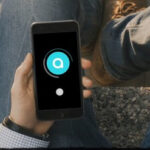A New Person Is In Charge Of Solving Colorado’s Transportation Problems. Here’s Where She’s Starting
Shoshana Lew isn’t walking into an easy job.
Lew, who became the executive director of the Colorado Department of Transportation in February, has a long list of issues to face: congestion up and down the Front Range, crumbling infrastructure, I-70 being … I-70, to name a few. All while ride-hailing apps like Uber and e-scooters are up-ending traditional forms of transportation.
But she’s keeping focused on a basic principle: The technologies people use to get around Colorado may be changing significantly, but it’s her job to make sure the roads are up to the task.
 Nathaniel Minor/CPR News
Nathaniel Minor/CPR News“I think an important point to start with is that regardless of whether you’re taking a bus, a car, a scooter, a bicycle or walking, you’re relying on the same foundational system,” she said. “The roads that we use need to be strong. They need to be safe. They need to be in this state of good repair.”
Lew also said traffic congestion in the Denver metro is near a tipping point where personal vehicles may no longer be the best way to get around. And she sees big opportunities for more space-efficient people movers — like buses — to help get people where they need to go.
Lew joined Colorado Matters host Ryan Warner on his morning commute to talk about her agenda for the agency.
Interview Highlights
Colorado’s population boom can be bad news for the state’s congestion problem, and electric cars won’t be the cure-all.
“If you have a one-for-one match with new people and new cars, congestion gets worse, pollution in the air gets worse. … It’s not sustainable, and I think the congestion on the road and the pollution in the air are different manifestations of some of the same thing. Even cleaner vehicles have an environmental footprint.
I’m a big fan of electric cars, but they’re not a panacea. And car-for-car, they have a lot of potential, particularly as the energy mix that they use becomes cleaner. But at the same time, if you replaced every internal combustion engine with an electric car, you’d still have the congestion on the roads and you’d still have been environmental impact because whether it’s the manufacturing of those vehicles or the fact that they draw power from the system, there’s no free lunch.”
Traffic on I-70 is a problem, one that’s representative of why CDOT can’t just fix its issues with more lanes.
“I look at I-70 and say, ‘There’s not that much space where you could put more lanes.’ It’s a space where, because of the mountains that make Colorado beautiful, the road right of way is pretty limited. And I think that that’s a perfect example of the phenomenon where we can’t build our way out of congestion, because in some cases, there’s physically not the space to do it.
I don’t think that that’s the most efficient way to deal with managing a system that’s growing. If you look at big dense cities and how they get people around here, they tend to hit a breaking point where driving is sometimes not the best option.”
When highways do expand, Lew wants to design ways for cars to share all that new extra space with other modes of transportation.
“The U.S. 36 corridor between Denver and Boulder was a CDOT expansion project in a public-private partnership. One of the great innovations of that project is that the managed lane both helps with demand management, which helps from a congestion perspective, and it also provides a really efficient bus route. The Flatiron Flyer is, by the accounts of all who take it, one of the most efficient bus experiences in Colorado. And part of that is because we used our capacity expansion project to create a more efficient bus route. That’s an opportunity that exists in many highway projects.
I-25 is a good example. One of the things that we’re looking at, as we do our work to expand capacity at I-25, is can we build on our very successful Bustang service that goes up and down the I-25 corridor providing inter-city bus service? Once we have those managed lanes that are going to be part of that project, we can run our own buses. Others can run buses in those rights of way and suddenly there’s a more efficient way to take public transit between cities along the Front Range.”
Buses and ride shares offer new solutions to old problems. They also create new problems.
“I think the bus is part of the near-term future of CDOT. But it is not a one-size-fits-all problem, and it’s not a one-size-fits-all solution. It may be great for getting people to big inner-city hubs, but doesn’t replace the fact that technologies like ride sharing can have a lot of promise too. That being said, there’s ways that can increase congestion and there’s ways that it can reduce congestion, right? Folks taking one-person Uber or Lyfts could make congestion worse. Having more shared ride sharing where multiple people carpool through a facilitated platform could be a small form of transit.”
Coloradans rejected two statewide ballot measures in 2018 that would’ve funded transportation in different ways. Lew said communication was partially why.
“There is always a challenge of explaining to people clearly how big complicated projects result in impact. That doesn’t mean the money’s being wasted. In any big project, a large portion of that budget goes into functions like purchasing right of way, doing these vital preparatory steps that don’t translate into immediate impact for people. It’s not surprising that that’s hard for people to understand. I’m of the view that if you can’t explain what you’re doing to your neighbor, there’s probably a problem with the way you’re doing it.”
![DRMAClogo[1] DRMAC](https://drmac-co.org/wp-content/uploads/2019/12/DRMAC20logo1.jpg)



Leave a Reply
Want to join the discussion?Feel free to contribute!